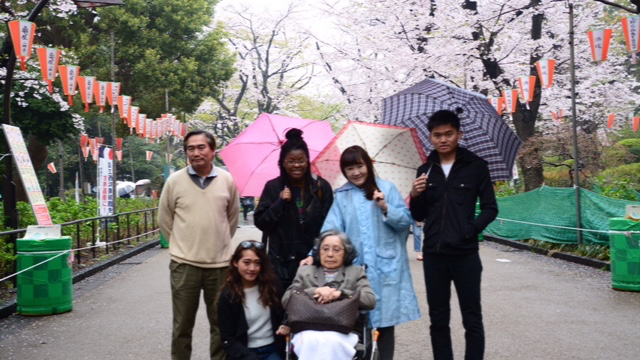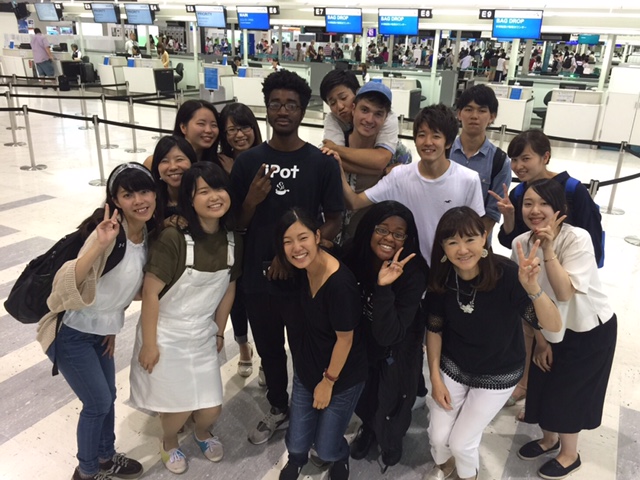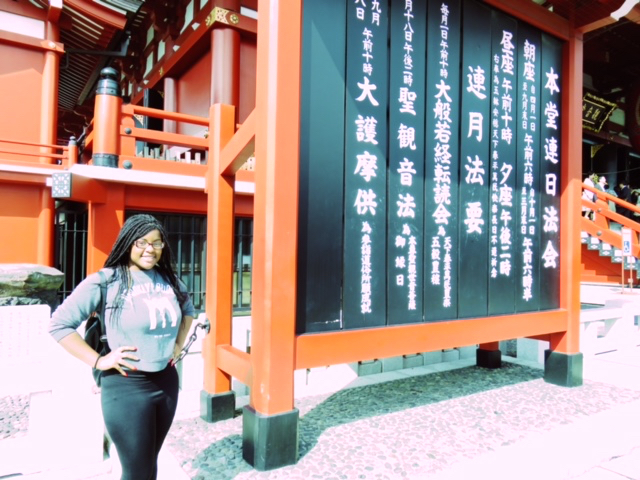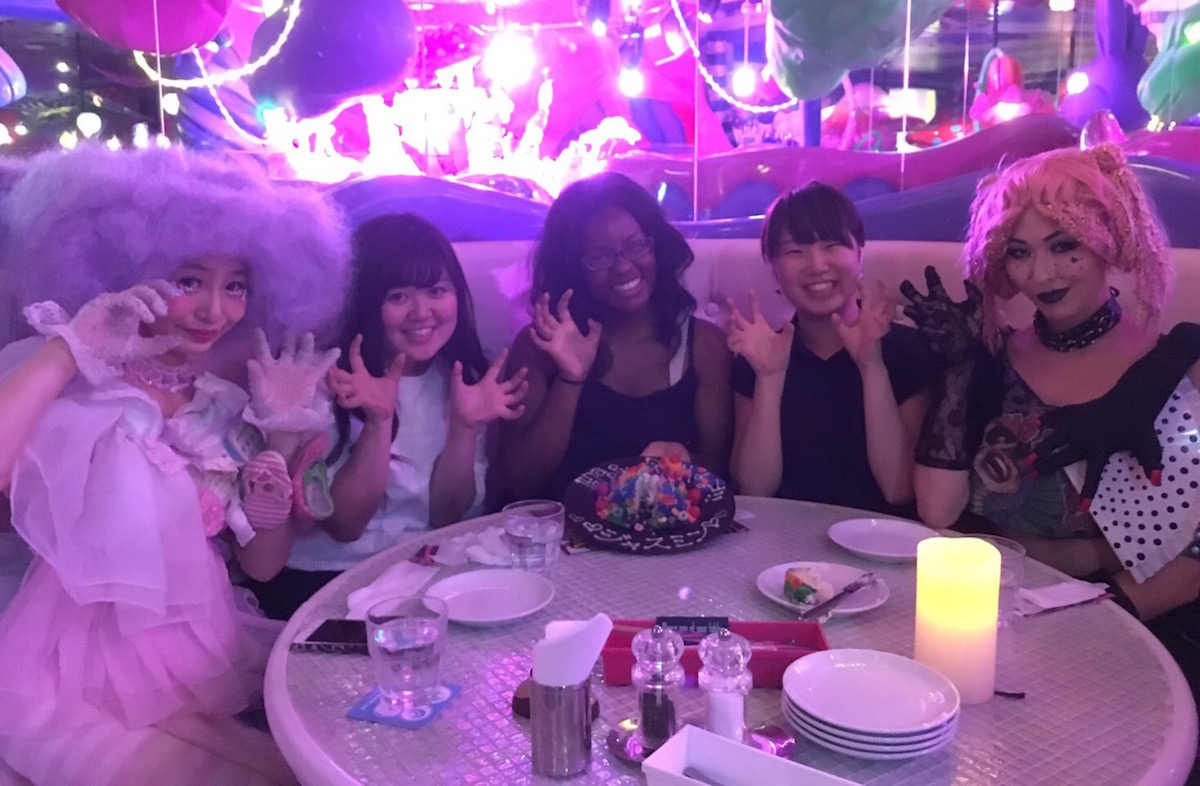Among hundreds of students who applied to study abroad, I was one of two who planned to spend an entire academic year. I walked onto the campus of the College of Wooster as a Posse Foundation Scholar with a passion for teaching and Japanese culture. For eight months, my personal journey in Japan took me out of my linguistic and cultural comfort zones, as well as empowered me to further my education of the Japanese language and society.
Most of my middle school and high school years were spent enjoying anime (Japanese animations or cartoons) and manga (Japanese comics). These two outlets provided me with a window to gain some knowledge of Japanese customs and even to visualize what Japan would look like. These glimpses of Japanese culture gave me some helpful information that I eventually used when I was there. For instance, many anime feature the characters bathing in a hot spring, which is usually separated by gender and may be outdoors. That precursor of the cultural significance of public bathing, prepared me for the moment I would bathe in an onsen (hot spring) with strangers. After the first few embarrassing moments of trying to cover my body, the onsen became one of my favorite aspects of Japan. I left high school with an interest and used my college’s resources and faculty to craft my interest into an achievable academic plan.
During the fall of 2015 and spring of 2016, in a unique and highly admired country, I have taken countless pictures and videos of the beautiful landscape, historic temples and shrines, and variety of foods — all of which coated my social media profiles. So, many of my friends from high school, college and beyond had the chance to experience Japan through me.
“You’re living the dream” and “You’re living my dream” are the words I heard most often from my friends. I know any college student’s goals of going to a different country can come to fruition. Throughout my first year at Wooster, many students and faculty advocated for me to make a comprehensive list of interests and to keep my course schedule and post-graduate plans open.
It could have been be easy to exclude traveling or studying abroad. My mom and some friends did share their concerns with me, that it could be too expensive or an unnecessary luxury to go to Japan for two semesters. Even though studying abroad can seem out of reach, giving yourself the chance to experience a new culture allows you to understand your own from an outside perspective, develop unforgettable friendships, and overcome apprehension toward financial constraints. I ultimately decided to go for it. I realized my dream of going to Japan would, most likely, never go away, but any obstacles that would come can be worked through, despite how daunting it may appear.
Preparing for foreign exchange
The preparations for studying abroad can be a large amount to handle, but the experiences while abroad helped me quickly forget all the pressures I faced, and my adventures have been well worth my labor. My first steps included searching and applying to a study abroad program, applying for approval from my college to study abroad, then research study abroad scholarships. In the midst of these things, I also worked to get my passport and visa (with help from my study abroad program) and save money.
I completed the majority of the paperwork and received my visa roughly a couple weeks before my flight, so I used that time to pack and investigate fun things to do in Japan. My flight for the fall semester marked a number of milestones; it was the longest flight I was ever on, first time traveling outside the United States and the first time I ate meals on a flight. I took a night flight to Chicago, then flew straight to Narita Airport, near Tokyo. Even though I traveled alone, my excitement couldn’t be contained. I took several pictures of my seat, the monitors around my seat and the airport.

Once I arrived and needed to retrieve my luggage, I was quickly spotted by the Japanese students from my study abroad program. We gathered with one of the staff members, who was waiting for American students to arrive. After a week of a hotel stay for orientation, I and about four other girls moved into a single-room, female dormitory.
My study abroad program, IES Abroad, congregated about 25 students from various American colleges to attend courses together at a Kanda University of International Studies in Chiba, Japan. One required course is Japanese language, we were tested and placed into levels one to four. The semester was about four months long, which included sponsored field trips to Okinawa and Kanazawa. During the following semester, new American students are enrolled, while the year long students, myself and a student from Montana, are welcomed back along with the new students. So, I met about 50 American students in addition to making new Japanese friends, while reconnecting with people I knew from the fall semester.
The friendships I established abroad were absolutely unforgettable and led to exciting and humorous moments. One of my most memorable friendships started in a routine language performance activity, where we got into pairs and talked to another pair of Japanese students — in Japanese, of course. Since I didn’t know much Japanese at the time, I would often nod, smile and do my best to wait until the timer was up. However, my partner, Emir, and I met two Japanese girls who became two significant and dear friends. Miku and Mizuki are best friends and are third years at the university (see my birthday photo, above.) Their outgoing personalities and sense of humor had me and Emir shouting in laughter and speaking in excited voices during the activity. During the spring semester, Emir wasn’t there, but the three of us continued to have funny moments together, eat together, and we even celebrated my birthday.
For my last meal in Japan we went to an all-you-can-eat (食べ放題) buffet and reflected on our friendship, laughed and made fun of each other. They even gave me a farewell gift, a collage of our time together, which had pictures of us at school, my birthday party, and snap we sent each other. At dinner they shared with me that Emir and I are their first foreign-exchange student friends. My parting with them was incredibly sad, but we decided it was a temporary parting and we would see each other again. Studying abroad is not just about what that country can give you; your impact on other people’s lives is just as powerful and memorable.

As a foreigner in Japan, the question I heard the most was: “Where are you from?” I would reply “American” or “I’m from America.” Sometimes it would lead to an unwanted conversation about Donald Trump. Yet the consistency of saying that “I am American” forced me to confront a portion of my identity that can be easy to disassociate myself from as a black woman. On many occasions, I had to explain racial disparity and inequity in America to my Japanese friends, who are not familiar with crimes that are fueled by hatred and racism. Their sympathy and awareness to the suffering of African Americans manifested a cross-cultural encounter for us both. My experiences of explaining about my home country to someone of a different origin is not only important for them, but also for me, since that custom, issue or tradition is embedded into my personality. Although there are many unpleasantries and hardships that come with being an African-American, it is a staple of my identity that can not be easily removed.

Financial concerns & scholarships
Scholarships were going to be my main financial support for spending my entire junior year abroad, so I spent countless hours writing essays and filling out scholarship applications. One scholarship that made the biggest impact on supporting my study abroad and also allows me, a recipient, to also support other students’ study abroad endeavors. The Benjamin A. Gilman International Scholarship awards students “of limited financial means to pursue academic studies or credit-bearing, career-oriented internships abroad,” according to the website.
The Gilman scholarship is offered to students who are U.S. citizens during their undergraduate careers. Eligible students are those who are receiving a federal Pell Grant and who can prove they will receive it during the application process or time abroad; are going to be abroad for at least four weeks (two weeks for community service students) but no more than an academic year; and are not planning to go to a country on the U.S. Department of State’s current Travel Warning List.
The application process involves an application and some paperwork to be completed by the study abroad advisor and financial advisor from one’s school, in addition to two essays: a statement of purpose essay and a follow-up service project essay. The statement of purpose essay gives you the chance to explain the issues you may have faced in school and to paint a picture of the impact traveling abroad would have on your life and future endeavors. As for the follow-up service project essay, this a unique chance to use your experiences abroad as a tool to “inspire others to pursue their own experiences abroad” and the scholarship itself.
As a VOX alumna, I chose to gear my follow-up service project toward today’s teens. Funding from the Gilman scholarship helped me use my experience to emphasize the importance of cross-cultural interactions, and shatter the stereotype that one’s financial background dictates one’s interests or limits their ability to travel across the world.
Jasmine, 21, is a VOX alumna who is returning to The College of Wooster after one year abroad as a senior.




